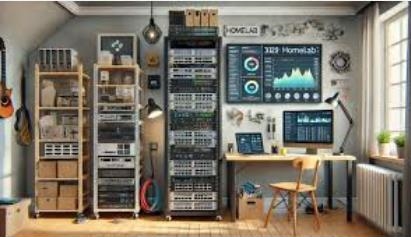In 2025, making a home server for media, backups, and AI is no longer a scary tech challenge. Instead, it’s a powerful means to take back control of your digital life. Imagine a system that streams 4K movies perfectly, protects gigabytes of data that can’t be replaced, and executes AI models locally like a swarm of bees, efficiently organizing chores based on your habits. This own digital command center lets you be independent while still working very well.
Start by choosing hardware that is very well-balanced. A quad-core CPU like AMD’s Ryzen 3000 series or Intel processors with Quick Sync transcoding capability is a good place to start. Adding an NVIDIA GPU can be very helpful for speeding up video transcoding and executing AI workloads. This keeps your server responsive even when it has a lot of work to do. Storage should combine super-fast NVMe SSDs as boot drives with RAID-Z or mirrored hard drive arrays for bulk storage. This way, you have both super-fast speeds and strong data safety.
Proxmox VE is the virtualization platform that combines virtual machines and lightweight Linux containers in a way that works perfectly. This open-source behemoth can handle a wide range of tasks with ease, from media servers like Plex or Jellyfin to AI containers. It can scale smoothly because to its built-in clustering features and a large user community. The very efficient orchestration it gives is similar to what you would find in a business setting, but it is great for people who love to work in their home labs.
ZFS storage pools are like strong guards for your data, keeping it safe and sound. Their features, such snapshots, replication, and customizable RAID configurations, protect against disk failures or corruption without you having to do anything. This is especially important when your media assets are hundreds of hours long and your backups are family history. TrueNAS SCALE combines storage with containerized apps and virtualization to give you a very unique twist. This lets you easily add smart home systems or AI-driven utilities to your core storage.
Adding AI features to your home server turns it from a passive storage space into an active helper. Running lightweight machine learning models in Docker or LXC containers on your own computer keeps your data private and speeds up response times. Tasks like voice control, media indexing, or predictive automation happen right away. Imagine your server knowing what kind of entertainment you want and giving you suggestions that make you happy every day, with an AI swarm buzzing silently in the background.
A strong network infrastructure is another important support. Set up Samba shares with user rights that are well thought out to make sure that access is smooth and safe between devices. Using VLANs to separate traffic not only makes things safer for tech-savvy consumers, but it also makes the most of bandwidth during busy streaming or backup times.
To be strong, you need to accept automation. Setting up snapshots and backups to run automatically, either with Proxmox’s built-in tools or custom scripts, makes it very easy to get back to normal after updates or bugs. Often, it’s just a click away. When you automate mundane operations, you have more time to come up with new ideas. Your server becomes an essential digital nerve center, whether you use it to host password managers like Vaultwarden or smart home controllers like Home Assistant.
Modern home servers are surprisingly small but powerful. They run quietly and use little power, so they are easy to reach. The system streams media and transmits data quickly without any throttling when used with fast networking choices like 2.5GbE or 10GbE. This design for the future puts speed, efficiency, and sustainability first, with no compromises.
In the end, buying a home server that is made just for media, backups, and AI gives you control over your digital world. This combination of hardware knowledge and software skill opens up a world of fast local access, foolproof data protection, and AI that gets smarter over time. It future-proofs your life with privacy and flexibility at its core.
—
**Important Steps for Setting Up Your 2025 Home Server:
– Pick a CPU with at least four cores that can do hardware transcoding. An NVIDIA GPU speeds up AI and media processing by a lot.
– Use NVMe SSDs as boot drives with ZFS RAID-Z or mirrored pools to make sure that media and backups are stored quickly and safely.
– Use Proxmox VE as the main part of your virtualization system to easily handle VMs and containers.
– Set up VLANs on Samba shares to give devices secure, fast access to the network.
– Automate the schedules for taking snapshots and backups to make recovery easier and keep the system safe.
– Use containers to run media servers like Plex or Jellyfin, AI workloads, and smart home integrations for flexible service deployment.
– Use 2.5GbE or 10GbE networking to get rid of slowdowns when transferring large amounts of data.
– Choose a case that is silent, small, and energy-efficient for use at home.
By putting these tactics together, your home server goes beyond what most people expect. It becomes an inspired launchpad for the new ideas that will come in the future, perfectly balancing ease of use with mastery.





